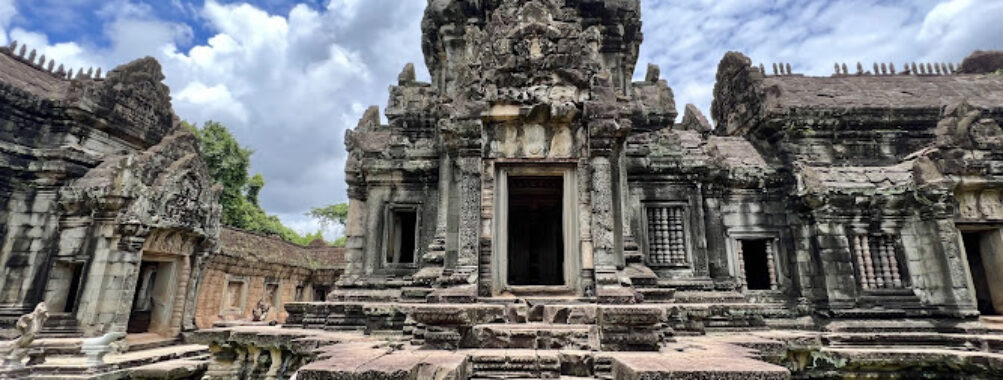
Banteay Samre Temple
Table of Contents
Description
As I wandered through the lesser-known temples of the Angkor Archaeological Park, Banteay Samre immediately caught my eye with its remarkable resemblance to the iconic Angkor Wat, albeit on a more intimate scale. Built during the early 12th century under King Suryavarman II, this Hindu temple dedicated to Vishnu stands as one of the most complete and best-preserved ancient structures in the region.
What truly sets Banteay Samre apart is its classical Angkor Wat-style architecture, featuring a central temple mountain surrounded by concentric galleries. The temple’s distinctive reddish sandstone gives it a warm, enchanting glow during sunrise and sunset that photographers will absolutely adore. Trust me, I spent hours capturing these magical moments!
Key Features
• Magnificent east-facing gopura (entrance pavilion) with intricate carvings depicting scenes from Hindu mythology
• Beautifully preserved central sanctuary rising on a single platform
• Extensive series of well-maintained enclosed courtyards
• Detailed bas-reliefs showcasing celestial dancers (apsaras) and mythological scenes
• Elevated walkway leading to the central tower, reminiscent of Angkor Wat’s design
• Unique architectural elements blending both Angkor Wat and Banteay Srei styles
• Reconstructed using the anastylosis method, maintaining historical accuracy
Best Time to Visit
I’ve visited this temple during different seasons, and I can confidently say that early morning (between 7-9 AM) offers the most magical experience. The soft morning light creates stunning photo opportunities, and you’ll likely have the temple almost to yourself. The temple is also particularly enchanting during late afternoon, around 4 PM, when the setting sun bathes the sandstone in golden hues.
Avoid midday visits between November and April when temperatures soar. If you’re visiting during the rainy season (May to October), morning visits are your best bet to dodge the afternoon showers. And hey, those clouds can actually create some pretty dramatic backdrops for your photos!
How to Get There
Getting to Banteay Samre requires a bit of planning since it’s located off the main temple circuit. You’ll find it about 400 meters east of the East Baray reservoir. The most convenient way to reach the temple is by tuk-tuk or private car from Siem Reap. I usually recommend hiring a driver for the day – it’s worth the extra cost for the flexibility and comfort.
If you’re feeling adventurous, you can rent a bicycle, but remember it’s quite a journey in the Cambodian heat. A motorcycle tour is another exciting option I’ve tried, though make sure you’re comfortable riding on sometimes bumpy roads.
Tips for Visiting
From my multiple visits to Banteay Samre, I’ve learned a few tricks that’ll help make your experience more enjoyable. First off, wear comfortable shoes with good grip – those ancient stones can be slippery, especially after rain. Bring plenty of water and sun protection; the Cambodian sun can be intense.
I’d suggest allocating at least 1-2 hours to explore the temple properly. The site isn’t as crowded as Angkor Wat, which means you can take your time examining the intricate carvings and architectural details without feeling rushed. Speaking of which, bring a good camera – the detailed bas-reliefs here are absolutely worth capturing.
Consider combining your visit with nearby temples like Pre Rup or East Mebon for a more efficient itinerary. And don’t forget to carry small denomination USD or Cambodian Riel for any local purchases. Oh, and one last thing – some of the local guides around the temple are incredibly knowledgeable about its history and symbolism. I learned so much from them that transformed my understanding of Khmer architecture!
Remember to dress respectfully – cover your shoulders and knees as this is still a religious site. Early morning visits not only give you the best light for photos but also help you avoid the larger tour groups that typically arrive mid-morning.
Location
Places to Stay Near Banteay Samre Temple
Find and Book a Tour
Explore More Travel Guides
No reviews found! Be the first to review!